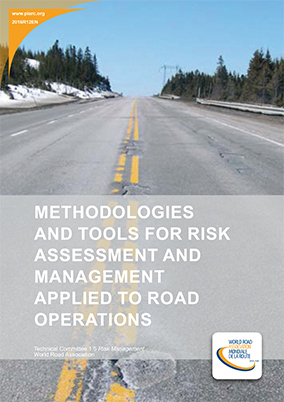Methodologies and tools for risk assessment and management applied to road operations

This report deals with methodologies and tools for risk assessment and management applied to road operations including managing risks in relation to the climate change.
Chapter 1 of this report starts with a classification of methodologies for risk management of road infrastructure. Particular attention is paid to methodologies that can be applied on object level and those at the strategic level. Pre-existing risk management methodologies are presented as examples on the basis of risk matrices developed for this report.
Chapter 2 presents a study on the development of a practical road disaster management system for various natural disasters by applying risk management techniques. Risk is defined here as the product of the likelihood of disastrous event and its consequences. The road facilities targeted are bridges, embankments, tunnels, slopes, and so forth. Various natural disasters such as earthquakes, tsunamis and heavy rainfalls are included in the analysis.
Chapter 3 describes how population and machinery usage has increased in high quantities not without consequences on the planet. As a consequence, extreme weather events occur and the tendency is increasing due to the climate change. This provokes severe damage to road infrastructure due to storms, floods, landslides, strong winds, erosion, droughts, high temperatures and heavy snowfalls.
Information sheet
- Date: 2016
- Author(s): Comité technique 1.5 Gestion des Risques Technical Committee 1.5 Risk Management
- Domain(s): Risk Management / Road Network Operations
- Type: 2016R12EN - Technical Report
- PIARC Ref.: 2016R12EN
- ISBN: 978-2-84060-394-8
- Number of pages: 54